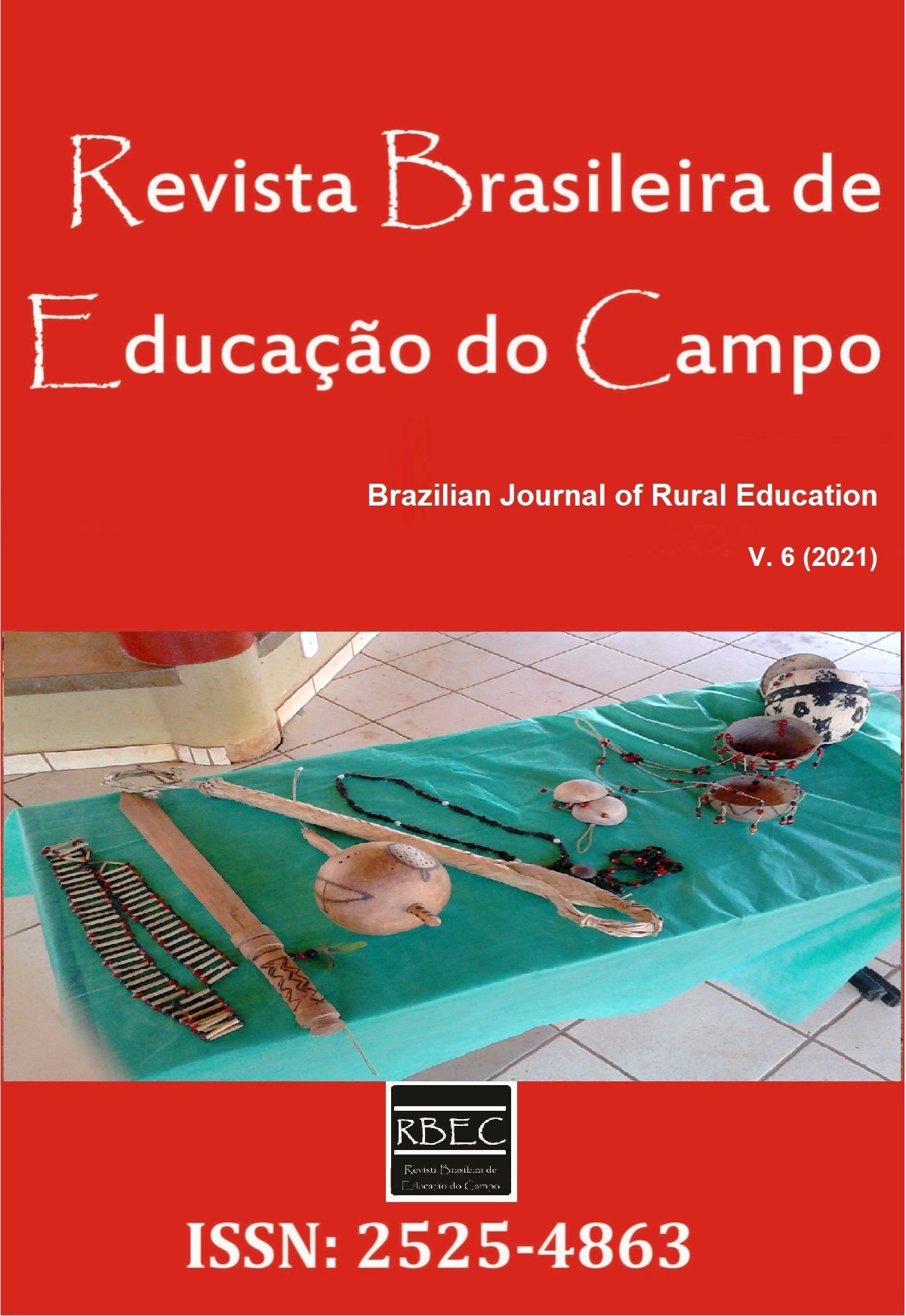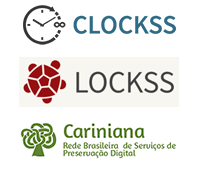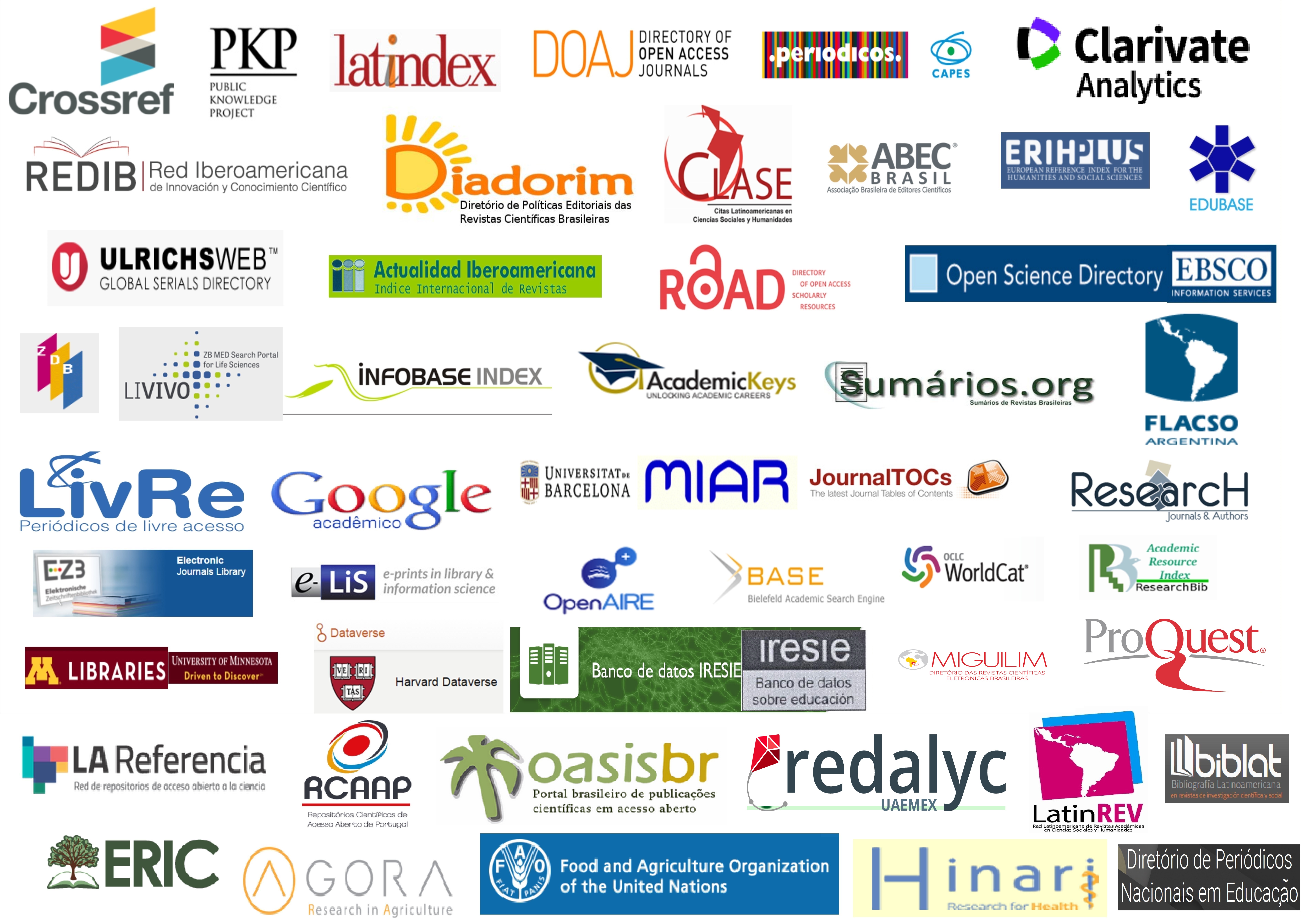O processo histórico-social da Terra Indígena Guarita
DOI:
https://doi.org/10.20873/uft.rbec.e8533Resumo
O presente estudo tem como objetivo geral conhecer as especificidades do modo de ser Guarani, na Tekoá Ka’aguy Porã (Aldeia Indígena Gengibre), localizada na Terra Indígena Guarita, situada na região noroeste do Rio Grande do Sul. O estudo é produto de uma disciplina do 4º semestre de um curso de Licenciatura em Educação do Campo, ofertado por uma Universidade Federal na modalidade à distância. Para realizar a pesquisa primeiramente foi realizada uma revisão bibliográfica sobre a realidade indígena no Brasil, posteriormente uma pesquisa documental buscando elementos sobre o processo histórico de formação e organização da Terra Indígena Guarita, através de observação direta, conversas informais e entrevistas, resultando numa análise descritiva dos dados. Os resultados da pesquisa possibilitaram conhecer o cotidiano e os modos de vida do povo Guarani, identificando especificidades do modo de ser Guarani na Tekoá Ka’aguy Porã, incluindo suas crenças, hábitos alimentares e elementos da cultura material, colaborando desta forma, com a formação do futuro licenciado que pode vivenciar de perto um pouco da diversidade que possivelmente encontrará na sala de aula. Por meio da observação e da interação com o objeto da pesquisa foi evidenciado também a relação deste povo com a natureza e o meio ambiente.
Palavras-chave: pesquisa em educação, cultura, terra indígena, formação de professores.
The historical-social process of the Guarita Indigenous Land
ABSTRACT. The present study has as general objective to know the specificities of the Guarani way of being, in Tekoá Ka'aguy Porã (Indigenous Village Gengibre), located in the Terra Indígena Guarita, located in the northwest region of Rio Grande do Sul. The study is the product of a discipline of the 4th semester of a Licentiate Course in Rural Education, offered by a Federal University in the distance modality. In order to carry out the research, a bibliographic review on the indigenous reality in Brazil was carried out, later on, a documentary search seeking elements on the historical formation and organization process of the Guarita Indigenous Land, through direct observation, informal conversations and interviews resulting in a descriptive analysis of the Dice. The results of the research made it possible to know the daily life and the ways of life of the Guarani people, identifying specificities of the way of being Guarani in Tekoá Ka'aguy Porã, including their beliefs, eating habits and elements of material culture, thus collaborating with the formation of the future graduate who can experience up close a little bit of the diversity that he will possibly find in the classroom. Through observation and interaction with the research object, the relationship of these people with nature and the environment was also evidenced.
Keywords: research in education, culture, indigenous land, teacher training.
El proceso histórico-social de la Tierra Indígena Guarita
RESUMEN. El presente estudio tiene como objetivo general conocer las especificidades de la forma de ser guaraní, en Tekoá Ka'aguy Porã (Pueblo Indígena Gengibre), ubicado en la Terra Indígena Guarita, ubicada en la región noroeste de Rio Grande do Sul. El estudio es el producto de una disciplina del 4to semestre de un Curso de Licenciatura en Educación Rural, ofrecido por una Universidad Federal en la modalidad a distancia. Para llevar a cabo la investigación, se realizó una revisión bibliográfica sobre la realidad indígena en Brasil, luego, una búsqueda documental buscando elementos sobre el proceso histórico de formación y organización de la Tierra Indígena Guarita, a través de observación directa, conversaciones informales y entrevistas que resultaron en un análisis descriptivo del Dado. Los resultados de la investigación permitieron conocer la vida cotidiana y las formas de vida de los guaraníes, identificando las especificidades de la forma de ser guaraníes en Tekoá Ka'aguy Porã, incluidas sus creencias, hábitos alimenticios y elementos de la cultura material, colaborando así con la formación del futuro graduado que puede experimentar de cerca un poco de la diversidad que posiblemente encontrará en el aula. A través de la observación y la interacción con el objeto de investigación, también se evidenció la relación de estas personas con la naturaleza y el medio ambiente.
Palabras clave: investigación en educación, cultura, tierras indígenas, formación del profesorado.
Downloads
Referências
Assembleia Legislativa do Rio Grande do Sul. (2010). Coletivos Guarani no Rio Grande do Sul: Territorialidade, Interetnicidade, Sobreposições e Direitos Específicos. Recuperado de: http://www.al.rs.gov.br/site/
Becker, Í. I. B. (1976). O Índio Kaingang no Rio Grande do Sul. Antropologia, (29).
Benites, T. F., Falcade, N. T., & Luckmann, S. (2014). Cotidiano no Tekoá Ka’aguy Porã – Uma experiência de convívio e diálogo. In Markus C., Altmann L., & Gierus R. (Orgs.). Saberes e Espiritualidades Indígenas (pp. 143-156). São Leopoldo: Editora Oikos.
Brasil. (1973). Lei 6001 de 19 de dezembro de 1973. Dispõe sobre o Estatuto do Índio. Brasília, DF: Casa Civil. Recuperado de: http://www.planalto.gov.br/ccivil_03/leis/l6001.htm
Brasil. (1988). Constituição da República Federativa do Brasil. Brasília: Senado Federal.
http://www.senado.gov.br/sf/legislacao/const/
Brasil. (1999). Resolução CEB nº 3, de 10 de novembro de 1999. (1999). Fixa Diretrizes Nacionais para o funcionamento das escolas indígenas e dá outras providências. Brasília DF: MEC. Recuperado de: http://portal.mec.gov.br/cne/arquivos/pdf/rceb03_99.pdf.
Brasil. (1997). Parâmetros curriculares nacionais: história, geografia. Brasília, DF: MEC. Recuperado de:
http://portal.mec.gov.br/seb/arquivos/pdf/livro051.pdf
Dooley, R. A. (1982). Vocabulário do Guaraní. Brasília, DF: Summer Institute Linguistics.
IBGE Instituto Brasileiro de Geografia e Estatística. (2010). Censo Demográfico - Características Gerais dos Povos indígenas. Recuperado de: https://censo2010.ibge.gov.br/terrasindigenas/
IBGE - Instituto Brasileiro de Geografia e Estatística. (2005). Censo Demográfico Tendências demográficas: uma análise dos indígenas com base nos resultados da amostra dos censos demográficos 1991 e 2000. Rio de Janeiro, RJ: IBGE.
Falcade, N. T., & Luckmann, S. (2010). Espaço de Revitalização da Cultura na Promoção da Saúde: Uma experiência em Ater na Terra Indígena Guarita. In Experiências de Assistência Técnica e Extensão Rural junto aos Povos Indígenas: O Desafio da Interculturalidade (pp. 215-233). Brasília, DF: NEAD/SAF.
Fundação Nacional do Índio – FUNAI. (2019, setembro 30). Brasil – Terras Indígenas. Recuperado de: http://www.funai.gov.br/index.php/indios-no-brasil/terras-indigenas.
Fundação Nacional do Índio – FUNAI (2017, junho 30). Brasil – Terras Indígenas - Guarita. Recuperado de: http://www.funai.gov.br/index.php/indios-no-brasil/terras-indigenas.
Gonçalves, D. G. (2010). Biodiversidade e Conhecimentos Tradicionais Associados: um estudo da realidade Kaingang e Guarani da reserva indígena da Guarita-Redentora-RS (Dissertação de Mestrado). Universidade de Caxias do Sul, Caxias do Sul.
Instituto Socioambiental. (2008). Povos indígenas no Brasil. Recuperado de: https://www.socioambiental.org/pt-br/o-isa/programas/povos-indigenas-no-brasil
Mello, H., Altenhofen, C., & Tommaso, R. (2011). Os contatos Linguísticos e o Brasil – Dinâmicas pré-históricas, Históricas e Sociopolíticas. In Mello, H., Altenhofen, C., & Tommaso, R. (Orgs.). Os Contatos Linguísticos no Brasil (pp. 13-56). Belo Horizonte: Editora UFMG.
Mota, L. T., & Assis, V. S. (2008). Populações indígenas no Brasil – historias, culturas e relações interculturais. Maringá, PR: UEM.
Moore, D. (2011). Línguas Indígenas. In Mello, H., Altenhofen, C., & Tommaso, R. (Orgs.). Os Contatos Linguísticos no Brasil (pp. 217-239). Belo Horizonte: Editora UFMG.
Portal Kaingang (2018, setembro 30). História. Recuperado de: http://www.portalkaingang.org/.
Ribeiro, B. G. (2013). O índio na cultura brasileira. Rio de Janeiro, RJ: Fundação Darcy Ribeiro.
Rodrigues, A. D. (1986). Línguas brasileiras. São Paulo: Loyola.
Schaden, E. (1974). Aspectos fundamentais da cultura Guarani. São Paulo, SP: Editora da Universidade de São Paulo.
Schmitz, P. I. (2006) Arqueologia do Rio Grande Do Sul, Brasil. Documento 05. São Leopoldo, RS: Editora Instituto Anchietano de Pesquisas Unisinos.
Silva, A. (2015). O Grafismo e Significados do Artesanato da Comunidade Guarani da Linha Gengibre (desenhos na cestaria) (Trabalho de Conclusão de Curso). Universidade Federal de Santa Catarina, Florianópolis.
Silva, B. (2015). Petyngua - Símbolo da Vida Guarani (Trabalho de Conclusão de Curso). Universidade Federal de Santa Catarina, Florianópolis.
Wizniewsky, J. G., & Kaufmann, M. P. (2018). Material didático da disciplina de Historia Agraria e Ambiental. Curso de Licenciatura em Educação do Campo. (no prelo).
Publicado
Como Citar
Edição
Seção
Licença
Proposta de Aviso de Direito Autoral Creative Commons
1. Proposta de Política para Periódicos de Acesso Livre
Autores que publicam nesta revista concordam com os seguintes termos:
a. Autores mantém os direitos autorais e concedem à revista o direito de primeira publicação, com o trabalho simultaneamente licenciado sob a Licença Creative Commons Attribution que permite o compartilhamento do trabalho com reconhecimento da autoria e publicação inicial nesta revista.
b. Autores têm autorização para assumir contratos adicionais separadamente, para distribuição não-exclusiva da versão do trabalho publicada nesta revista (ex.: publicar em repositório institucional ou como capítulo de livro), com reconhecimento de autoria e publicação inicial nesta revista.
c. Autores têm permissão e são estimulados a publicar e distribuir seu trabalho online (ex.: em repositórios institucionais ou na sua página pessoal) a qualquer ponto antes ou durante o processo editorial, já que isso pode gerar alterações produtivas, bem como aumentar o impacto e a citação do trabalho publicado (Veja O Efeito do Acesso Livre).
Proposal for Copyright Notice Creative Commons
1. Policy Proposal to Open Access Journals
Authors who publish with this journal agree to the following terms:
A. Authors retain copyright and grant the journal right of first publication with the work simultaneously licensed under the Creative Commons Attribution License that allows sharing the work with recognition of its initial publication in this journal.
B. Authors are able to take on additional contracts separately, non-exclusive distribution of the version of the paper published in this journal (ex .: publish in institutional repository or as a book), with an acknowledgment of its initial publication in this journal.
C. Authors are permitted and encouraged to post their work online (eg .: in institutional repositories or on their website) at any point before or during the editorial process, as it can lead to productive exchanges, as well as increase the impact and the citation of published work (See the Effect of Open Access).














